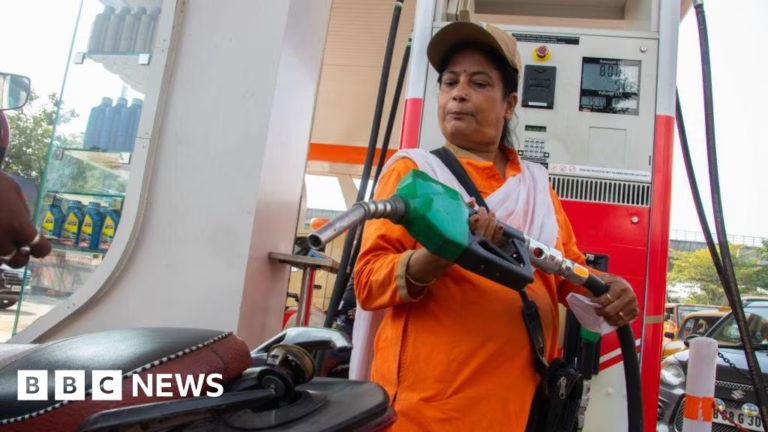What will it take for India’s private companies to begin investing in building new factories and firms?
It’s a question that’s confounded policymakers for years. As a share of gross domestic product (GDP), private investment in India has been on the decline since the global financial crisis of 2007, even while the overall economy clocked world-beating growth rates.
After a long hiatus, the investment rate picked up slightly in 2022 and 2023, but latest data from a leading ratings agency shows private sector expenditure as part of the overall investments in India’s economy dipped again to a decadal low of 33% this financial year.
Analysis from Icra of 4,500 listed companies and 8,000 unlisted companies reveals that while the pace of investments made by listed players moderated, those by unlisted entities actually contracted.
Over the years, several economists have raised similar concerns about a slowdown in private investments.
Banking tycoon Uday Kotak is among many who’ve raised concerns recently about India’s fading “animal spirits”, urging young business owners who had inherited companies to build new businesses rather than sitting tight and managing their existing wealth.
Data from investment advisory firm Value Research shows Indian non-financial businesses were sitting on cash worth 11% of their total assets, corroborating the view that companies are not spending money in making fresh investments.
So why are Indian corporate houses choosing to do that?
Weak domestic consumption in urban areas, muted export demand and an influx of cheap Chinese imports in some sectors were among the factors that “restricted the capacity expansion plans of Indian corporate houses”, Icra’s Chief Rating Officer K Ravichandran said in a note.
But beyond the more immediate reasons, private investment impulse has been low because of “global uncertainties and overcapacity”, India’s economic survey pointed out earlier this year.
Slowing private investments have a direct bearing on India’s growth prospects.
Investments by companies in assets such as factories, machinery or construction – also called gross fixed capital formation – make up around 30% of GDP and are its second largest contributor following private consumption.
India’s full-year GDP is expected to close at 6.5%, sharply lower compared to last year’s 9.2%. Growth has flagged on account of slower consumption.
With all the key levers of growth, including exports, slowing down and US President Donald Trump’s tariffs exacerbating global uncertainties, kick-starting private investment will be fundamental for India to hit its long-term growth targets, experts say.
According to the World Bank’s latest estimates, India will need to grow by 7.8% on average over the next 22 years to achieve its high-income status ambition by 2047.
Key to this would be to increase private and public investment to at least 40% of GDP from 33% currently, the bank estimates.
The government on its part has significantly increased spending, especially on infrastructure. It also cut corporate tax rates from 30% to 22% and doled out billions of dollars in production-linked subsidies to manufacturers over the years. Availability of bank credit isn’t a constraint any longer, and regulation has eased with regulatory restrictions halving between 2003 and 2020.
But none of this has prodded corporate India to boost spending.
According to Sajjid Chinoy, JP Morgan India’s Chief Economist, the big problem is the lack of demand in the economy to justify putting up additional capacities.
India’s post-pandemic recovery has been uneven, with the consumer class not expanding quickly enough. Demand for goods and services has thus been hit, with spending capacityfurther curtailed by a fall in wages, even though corporate profitability has soared to a 15-year high this year.
Instagram✓









